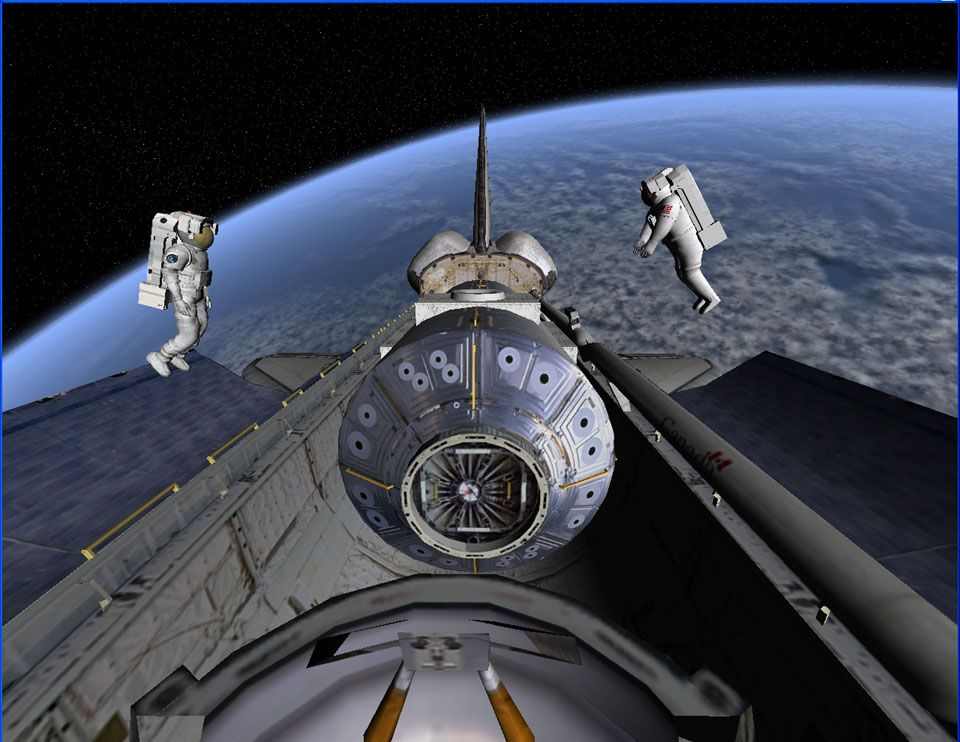
JPL is a division of the California Institute of Technology, Pasadena, CA. Each filter is controlled by a single LFO that sweeps the.
#Interstellar orbiter series
Mars Climate Orbiter is one of a series of missions in a long-term program of Mars exploration known as the Mars Surveyor Program that is managed by the Jet Propulsion Laboratory for NASA's Office of Space Science, Washington, DC. The Interstellar Orbiter from Earthquaker Devices is an all analog dual Resonant filter pedal. A special investigation team has been formed by JPL to further assess the situation.

The science return of that mission won't be affected."įlight controllers at NASA's Jet Propulsion Laboratory in Pasadena, CA and Lockheed Martin Astronautics in Denver, CO will continue their efforts to locate the spacecraft through the Deep Space Network during the next several hours. In fact, Mars Polar Lander will arrive in just over two months and its mission is completely independent of the Mars Climate Orbiter. This picture shows the settings used in this sound clip.

It began with the launch of Mars Pathfinder and Mars Global Surveyor in 1996, continued with Mars Climate Orbiter and Mars Polar Lander and will be followed by more missions in 2001, 20. Interstellar Orbiter: way cool, and exactly what I needed after my Data Corrupter to shape the sound (in the pictures it sits to the right of the Data Corrupter, because that position left the expression jacks accessible, but in the signal chain it comes after). "We have a robust program to explore Mars that involves launching on average one mission per year for at least a decade. Carl Pilcher, science director for Solar System Exploration at NASA Headquarters, Washington, D.C.

This is not necessarily science lost it is science delayed," said Dr. The program is flexible enough to allow us to recover the science return of Mars Climate Orbiter on a future mission. "If in fact we have lost the spacecraft it is very serious, but it is not devastating to the Mars Surveyor Program as a whole. "We believe that the minimum survivable altitude for the spacecraft would have been 85 kilometers (53 miles)." We are still trying to figure out why that happened," said Richard Cook, project manager for the Mars Surveyor Operations Project at NASA's Jet Propulsion Laboratory. It appears that the actual altitude was about 60 kilometers (37 miles). We thought we were doing that, but upon review of the last six to eight hours of data leading up to arrival, we saw indications that the actual approach altitude had been much lower. "We had planned to approach the planet at an altitude of about 150 kilometers (93 miles). Flight controllers did not detect a signal when the spacecraft was expected to come out from behind the planet. The engine burn began as planned five minutes before the spacecraft passed behind the planet as seen from Earth. All the information coming from the spacecraft leading up to that point looked normal. Pacific Daylight Time the orbiter fired its main engine to go into orbit around the planet. The Interstellar Orbiter is all analog, true bypass and hand made one at a time, part by part, knob by knob, wire by damn wire in the fiery town of Akron, Ohio. You can also create some very vocal sounds by using the LFO to control both filters and fine tuning the resonance, intensity and master frequency.NASA's Mars Climate Orbiter is believed to be lost due to a suspected navigation error.Įarly this morning at about 2 a.m. Adjust the intensity of one filter to taste and use an expression pedal to sweep the second to create some awesome moving center point phase effects. You can set the intensity of both filters to zero and use the Frequency to manually create wide filter sweeps or use an expression pedal for a unique wah tones. With all of this control, the Interstellar Orbiter is a knob twiddler’s dream with loads of possibilities! It can do everything from wah emulation to complex vocal formant filter and even a fairly convincing rotary speaker effect. The mix control adjusts the volume for the mix of each filter. The resonance becomes more “ringy” as you dial it up and more mellow as you dial it back.

When the LFO Intensity is raised the filter sweep is wider, the center frequency is raised and the resonance becomes more pronounced. Each filter is voiced differently and has controls for LFO intensity, resonance and mix. The LFO sweeps each filter in opposite directions and has a wide range. There are expression pedal jacks for both the master Frequency and the LFO rate. It has three universal controls: a master Frequency control that governs the center frequency of both filters, a master Rate control for the LFO and the Direct control for blending in the unaffected dry signal.


 0 kommentar(er)
0 kommentar(er)
